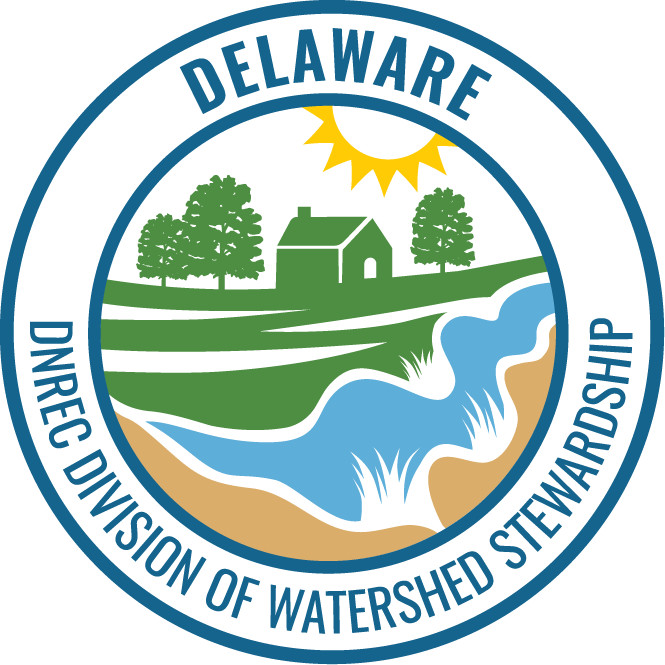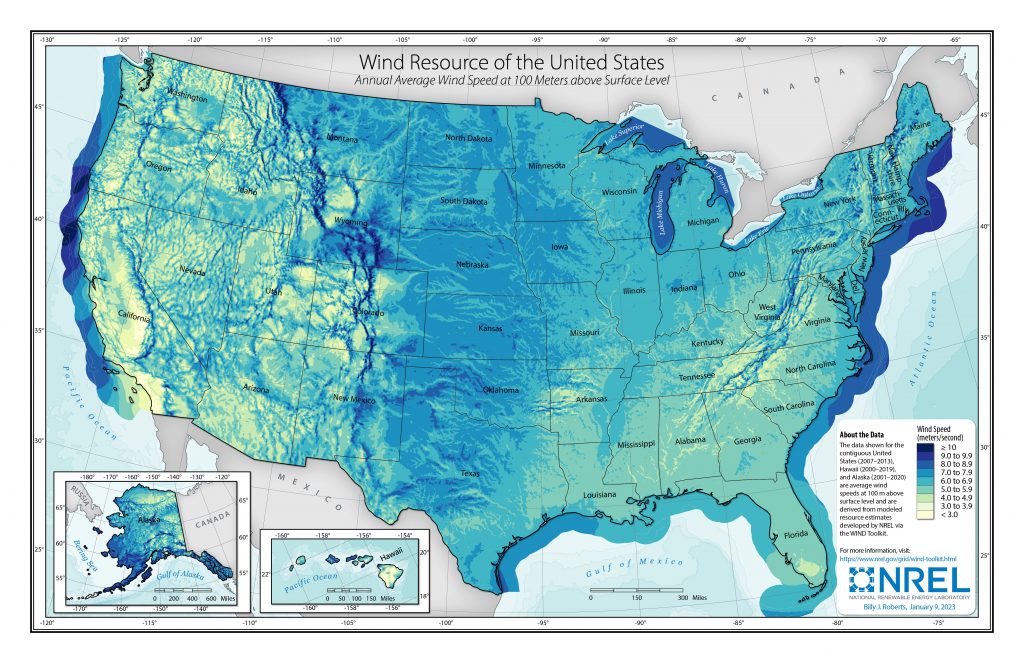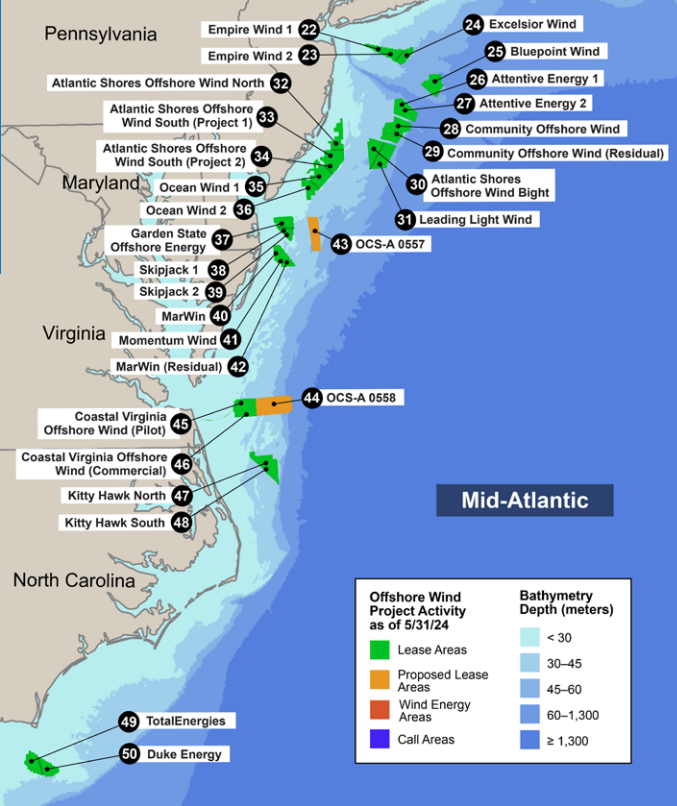
Facebook Twitter Instagram YouTube
Written on: September 24th, 2025 in Education and Outreach, Natural Resources
By Kathryn Lienhard, Delaware Sea Grant
Did you know that in 2022, more than 10% of the electricity generated in the U.S. came from wind energy? Humans have harnessed the power of the wind for thousands of years – most iconically, through traditional windmills – while modern wind turbines continue to advance in design and capacity to maximize the efficiency of wind farms we know today.
“Offshore wind energy” refers to the capturing of energy by wind turbines over a body of water, such as an ocean where winds are generally stronger and less turbulent than over land. Offshore wind energy development spans the globe: while the industry is relatively novel to the U.S., other regions such as the UK and China account for a large share of new development in recent years. Coastal regions of the mid-Atlantic U.S. have been analyzed for offshore wind energy suitability, with some projects already operating or under construction. Waters off the coast of Delaware, and the broader Delmarva region, are among those identified as suitable locations for developing offshore wind farms.

A map of annual average wind speeds at 100 meters above surface level in the U.S. Darker areas indicate higher wind speeds, while lighter areas indicate lower wind speeds. The dark regions of the mid- and northern-Atlantic coastlines demonstrate the suitable conditions for offshore wind energy development (Photo Credit: National Renewable Energy Laboratory)
Offshore wind in the U.S.
Commercial offshore wind energy projects in the U.S. are leased and permitted by a federal agency, the Bureau of Ocean Energy Management (BOEM). These projects are built in federal waters, which includes waters from 3 nautical miles (0-3 nm is state jurisdiction) to 200 nautical miles off of a state’s shoreline. Private wind development companies obtain leases by paying an initial purchase amount and annual rent for an offshore wind area pre-determined by BOEM.
Before building a wind farm, a proposed offshore wind project must undergo review and requires collaboration with various federal, state, and local entities throughout the planning process. The combined scoping, siting, leasing, construction, and commissioning of a project typically takes up to ten years due to the extensive technical, environmental, and economic processes required.
As of 2024, there were more than a dozen offshore wind energy projects planned or partially built in U.S. waters of the mid-Atlantic. As many of these projects were in early development phases, and therefore in need of federal permits prior to construction, presidential orders and subsequent agency actions in 2025 have prevented these projects from proceeding in the development process.
Offshore wind energy development pipeline in the Mid-Atlantic United States as of May 2024. Many of these projects have faced delays or removed approvals from federal agencies in 2025 (Map created by John Frenzl, National Renewable Energy Laboratory; Derived from the NREL Offshore Wind Market Report, 2024 Edition).

Delaware Sea Grant’s Role
Delaware Sea Grant, hosted by the University of Delaware, is one of 34 Sea Grant College Programs across U.S. coastal and Great Lakes states, Puerto Rico, and Guam. Sea Grant is a federal-university partnership, funded primarily by the National Oceanic and Atmospheric Administration (NOAA), with the goal of supporting healthy coastal environments and economies. We fund research, conduct extension efforts, and deliver education programs to support Delaware communities.
Delaware Sea Grant is a non-advocacy organization: this means our mission is not to advocate for any particular viewpoint, but rather, to use the best-available science when sharing information for decision-makers and the broader public. We support responsible energy decision-making by:
Current Initiatives and Programs on Offshore Wind
When offshore wind development was first proposed in the Delmarva region more than a decade ago, Delaware Sea Grant responded by convening experts and members of the public to participate in knowledge exchanges. As offshore wind development has progressed in recent years, we continue to adapt to the needs of local leaders and residents in discussions of responsible offshore wind development. Our efforts include:
The Future of Offshore wind in Delmarva
Since the offshore wind energy industry in the U.S. is largely leased and managed by the federal government, the future of the industry depends partly on the goals of the federal administration. Several projects, including the Maryland Offshore Wind Project off the Delmarva coast, received federal approvals in 2024 which would allow the developer to begin construction. However, rescissions of federal permit authorizations may delay or halt these projects. Whether a particular project proceeds may depend on the outcome of relevant litigation and the economic feasibility of building turbines offshore in a changing market.